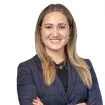What You Need To Know:
- New York State updated several aspects of its New York Paid Family Leave Law ("NY PFL") for 2024.
- As in prior years, the updates include changes to the maximum weekly benefit amount available to employees and the overall annual contribution employees make toward NY PFL benefits.
- The State is also considering a major update to the NY PFL program, as well as the State's corresponding statutory Disability Benefits program, in the context of potential coverage for absences related to prenatal leave.
2024 marks the start of the sixth year that NY PFL benefits are available to eligible employees. As a reminder, under the NY PFL law, eligible employees may receive up to 12 weeks of job-protected paid leave in a 52-week period for qualifying absences such as bonding with a newly born, adopted, or fostered child, caring for a family member with a serious health condition, or assisting loved ones when a spouse, domestic partner, child or parent is deployed abroad on active military service.
Here are the highlights of what has changed and what may change with NY PFL in 2024.
Potential Expansion to Cover Prenatal Leave
NY PFL has been updated and amended at various times since the program went into effect. For instance, on January 1, 2023, NY PFL was amended by adding an employee's sibling to the program's definition of "covered family members." Another potential expansion of NY PFL is looming, this time involving prenatal leave.
Specifically, on January 4, 2024, as part of her 2024 State of the State, Governor of New York, Kathy Hochul, introduced a six-point plan to combat maternal and infant mortality. As part of the plan, she proposed paid prenatal leave for mothers, which would expand NY PFL to include 40 hours of paid leave to attend prenatal medical appointments. Currently, New York statutory short-term disability benefits are not available until four weeks prior to the child's birth, after a seven-day waiting period. The proposed change will add prenatal care as a separate, qualifying event under NY PFL, and at this time it appears that the 40 hours would be in addition to the 12 weeks of NY PFL already available to employees for other covered reasons. During her address introducing the proposal, Governor Hochul stated that mothers may use prenatal leave to attend medical appointments, for sickness during different stages of the pregnancy, or for pregnancy complications.
Governor Hochul has stated that New York will be the first state in the nation to establish statewide coverage for paid prenatal care. Currently, California, Massachusetts, Minnesota, New Hampshire, New Jersey, Oregon, Washington, D.C., and Washington, all provide coverage for prenatal care under their respective PFL or paid family medical leave ("PFML") laws, albeit through different methods. For instance, Washington, D.C. amended its paid family medical leave program in late-2021 in several ways, including adding a new category of qualifying leave for prenatal medical care. In certain of the other PFL and PFML programs listed above, absences "for prenatal care" are included in their respective definitions of "serious health condition." This most often is done by including such absences as an example of coverage related to continuing treatment or continuing supervision by a health care provider.
Given existing PFL and PFML law treatment of prenatal care, it remains to be seen how potential forthcoming New York prenatal leave will differ from treatment of prenatal care absences in other jurisdictions. This is but one of the open questions involving the NY PFL prenatal leave proposal. Other nonexclusive open questions include, if and how the funding aspects of NY PFL may be impacted.
We are monitoring the proposal and will provide updates as appropriate.
Other aspects of Governor Hochul's proposed six-point plan include: (1) expanding access to doula care through a standing order that allows individuals to use such services without a referral from a physician; (2) eliminating co-pays and other out-of-pocket costs for Essential Plan and Qualified Health Plans; (3) directing the Department of Health to launch new initiatives to reduce the rate of unnecessary C-sections; (4) addressing maternal mental health and post-partum depression by training counselors on issues related to maternal mental health, postpartum depression, and anxiety; and (5) providing funding for the distribution of portable cribs for under resourced individuals at no cost in order to reduce the risk of sudden unexpected infant deaths.
Weekly Benefit Increase
At the start of 2024, New York employees saw an increase in their maximum weekly benefit amount that is available to employees who are approved for NY PFL. Employees who are approved for NY PFL receive 67% of their average weekly wage, up to a cap of 67% of the current New York State Average Weekly Wage ("NYSAWW"). For 2024, the NYSAWW increased to $1,718.15, which means the NY PFL maximum weekly benefit increased to $1,151.16. This is $20.08 more than the maximum weekly benefit for 2023, which was $1,131.08.
The new benefit rate applies to leaves that commence in 2024. For approved leaves that began in 2023 but extended into 2024, the 2023 benefit rate will apply.
Contribution Reduction
In 2024, employee payroll contributions that fund NY PFL are also changing. Specifically, employees are contributing less for NY PFL benefits in 2024 compared to the maximum contribution in 2023. In 2024, employees will contribute 0.373% of their gross wages per pay period, up to a maximum annual contribution of $333.25. The 2024 rate is $66.18 less than the maximum amount employees contributed in 2023.
Employer Takeaways
With the paid leave landscape continuing to rapidly expand and grow in complexity, we encourage companies to reach out to their Seyfarth contact for solutions and recommendations for addressing compliance with paid leave requirements.
The content of this article is intended to provide a general guide to the subject matter. Specialist advice should be sought about your specific circumstances.




